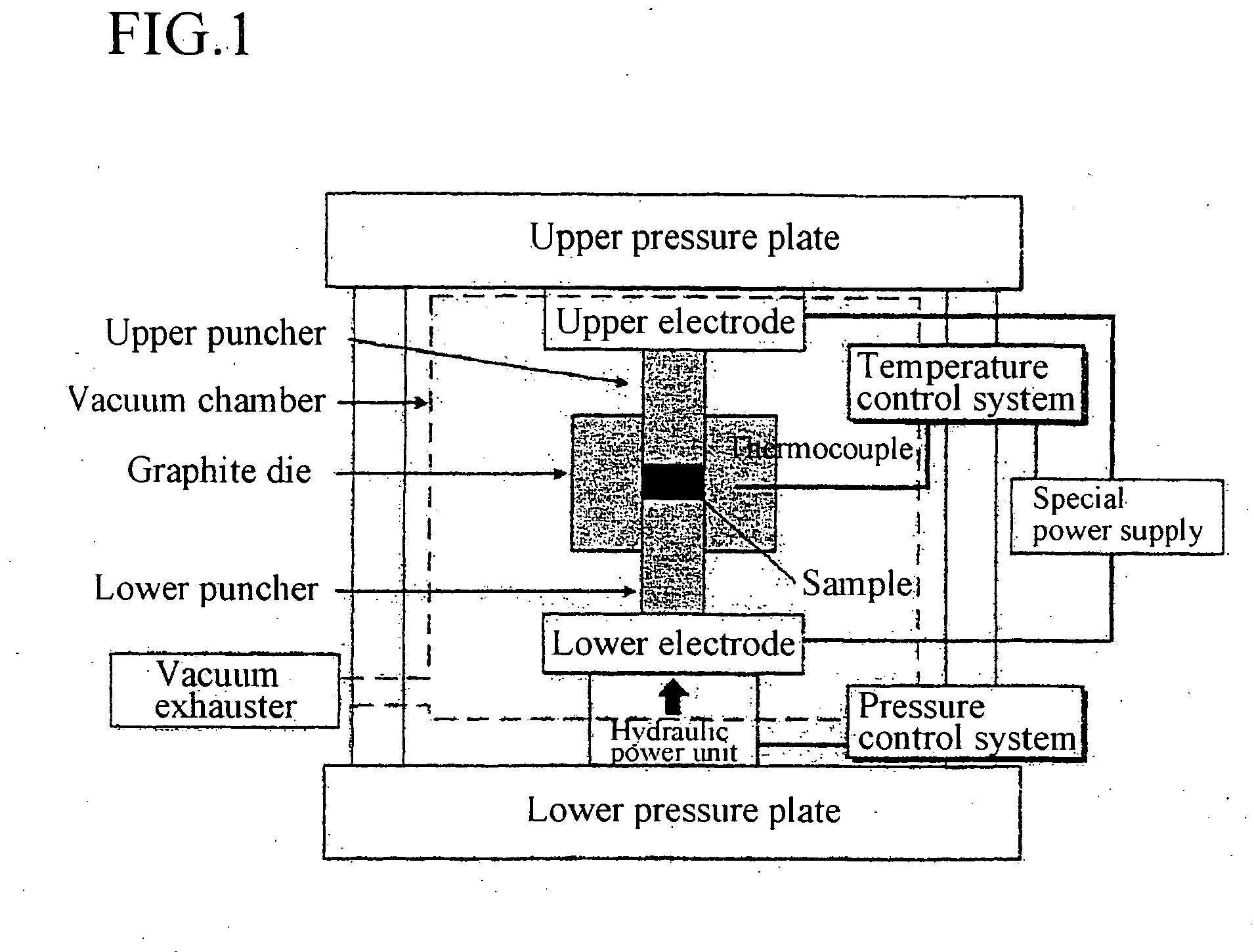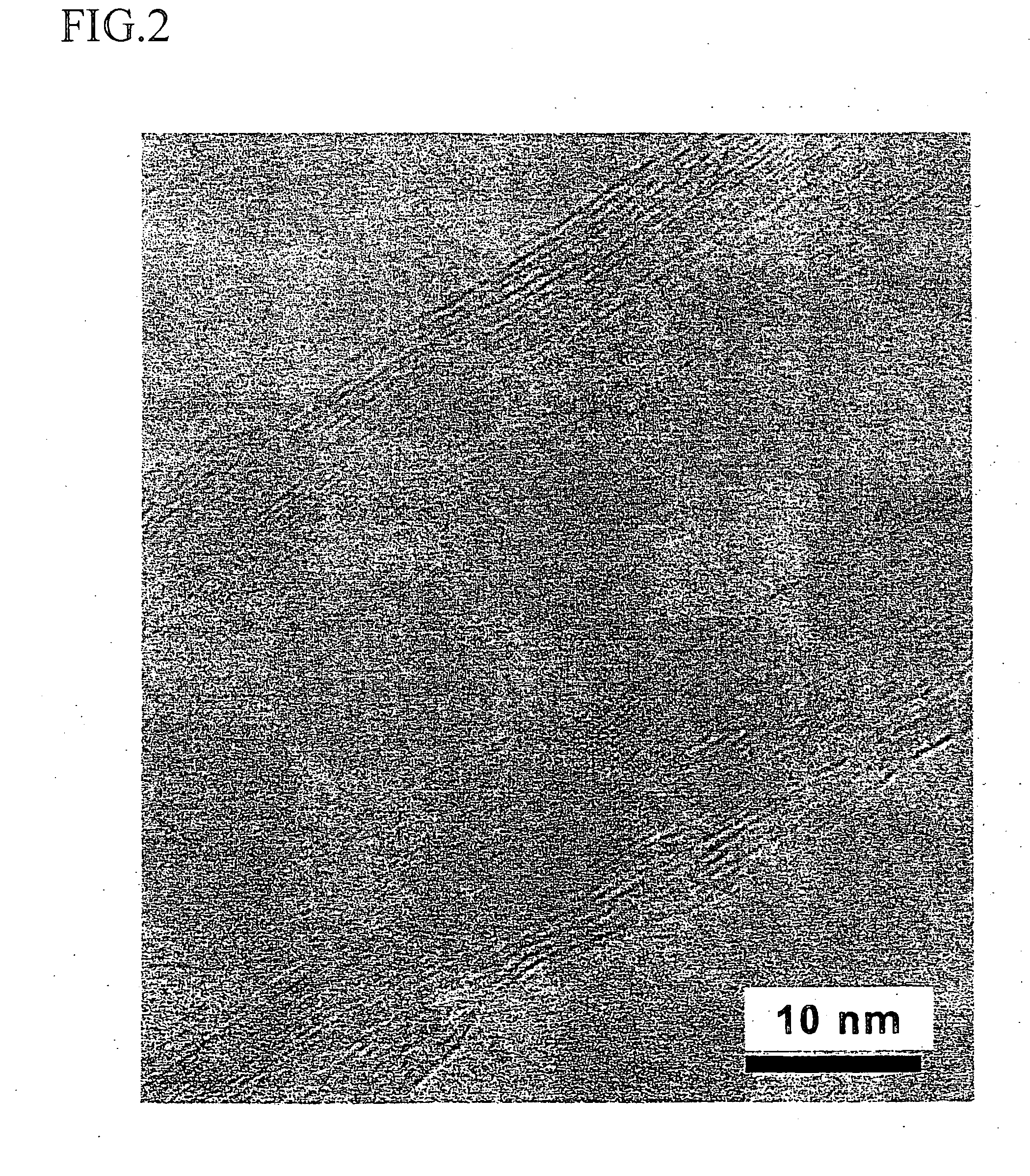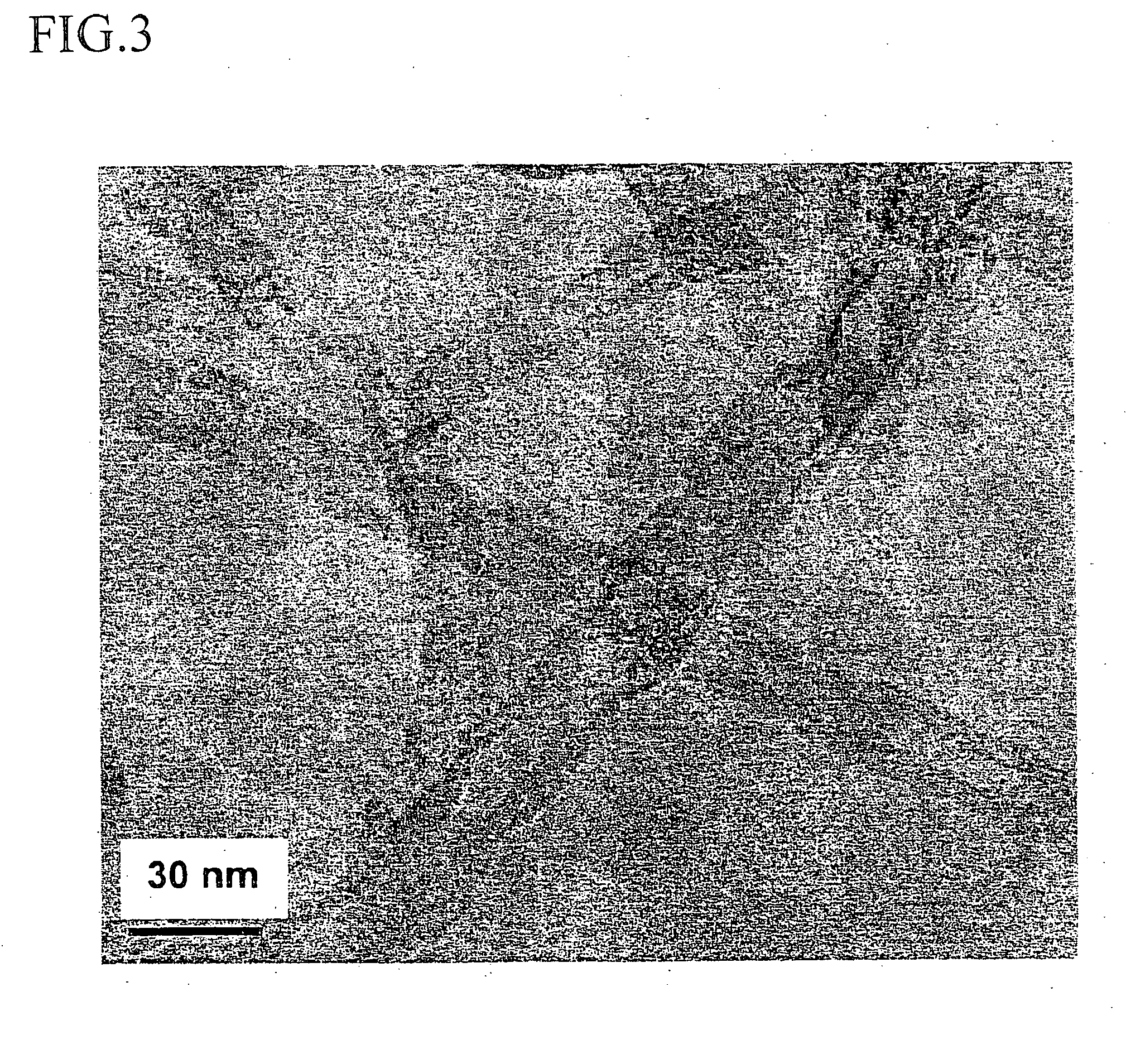Carbon Nanotubes Aggregate, Method for Forming Same, and Biocompatible Material
a carbon nanotube and aggregate technology, applied in the field of carbon nanotube aggregate, can solve the problems of inability to achieve compatibility, inability to enhance mechanical strength, and inability to meet the requirements of use,
- Summary
- Abstract
- Description
- Claims
- Application Information
AI Technical Summary
Benefits of technology
Problems solved by technology
Method used
Image
Examples
example 1
Purification of Carbon Nanotubes
[0048] Unpurified multilayer carbon nanotubes (100 mg) is fired and oxidized at 500° C. for 90 minutes in air. Subsequently, the oxidized sample (1 g) is placed in 6 M HCl (1 L) and left stand in an oven at 60° C. for 12 hours or more. Then, 500 mg of the filtrated and dried sample was placed in 2 M NaOH (500 mL) and refluxed for 6 hours. NaOH is removed by rinsing with hot water with filtrating. A filter residue was dried in the oven at 60° C. When confirmed using TEM, SEM and X ray photoelectron spectrometry, the filter residue was the purified multilayer carbon nanotubes from which amorphous carbon and the catalytic metal had been removed.
example 2
Investigation of Fluorination Container
[0049] The carbon nanotubes (100 mg) purified in Example 1 are collected in each container (5 mL) of SUS316L, nickel (Ni), platinum (Pt) or polytetrafluoroethylene (PTFE), and the container is set in a chamber (30 mL) made from SUS316L to which electrolytic polish was given. Subsequently, vacuum replacement with nitrogen is performed in the chamber, and the temperature is raised to 250° C. at 2° C. / minute under nitrogen flow (20 cc / minute) to perform a constant temperature treatment for 6 hours. After cooling, the vacuum replacement with 20% fluorine (F2) gas diluted with nitrogen is performed, and 20% F2 is run at 25 cc / minute. Then, the chamber was heated to the given temperature at 8° C. / minute and the temperature was kept for 9 hours to flourinate. As a result, in the case of using the PTFE container, the good fluorination was performed without undergoing metallic contamination.
[0050] Table 1 shows the presence or absence of the metallic ...
example 3
Fluorinated Carbon Nanotubes
[0051] The multilayer carbon nanotubes (500 mg) purified in Example 1 are collected in the PTFE container (5 mL), and the container is set in the chamber (30 mL) made from SUS316L to which electrolytic polish was given. Subsequently, the vacuum replacement with nitrogen is performed in the chamber, and the temperature is raised to 250° C. at 2° C. / minute under nitrogen flow (20 cc / minute) to perform the constant temperature treatment for 6 hours. After cooling, the vacuum replacement with 20% fluorine (F2) gas diluted with nitrogen is performed, and 20% F2 is run at 25 cc / minute. Then, the chamber was heated to 250° C. at 8° C. / minute and the constant temperature treatment was performed for 9 hours.
[0052] The C—F bond in the treated multilayer carbon nanotubes was identified using the infrared spectrometer and the X ray photoelectron spectrometer. A peak in the vicinity of 1192.3 and a peak of C 1s289.5 eV (the charge was compensated by making unmodifie...
PUM
| Property | Measurement | Unit |
|---|---|---|
| temperature | aaaaa | aaaaa |
| pressure | aaaaa | aaaaa |
| diameter | aaaaa | aaaaa |
Abstract
Description
Claims
Application Information
 Login to View More
Login to View More - R&D
- Intellectual Property
- Life Sciences
- Materials
- Tech Scout
- Unparalleled Data Quality
- Higher Quality Content
- 60% Fewer Hallucinations
Browse by: Latest US Patents, China's latest patents, Technical Efficacy Thesaurus, Application Domain, Technology Topic, Popular Technical Reports.
© 2025 PatSnap. All rights reserved.Legal|Privacy policy|Modern Slavery Act Transparency Statement|Sitemap|About US| Contact US: help@patsnap.com



